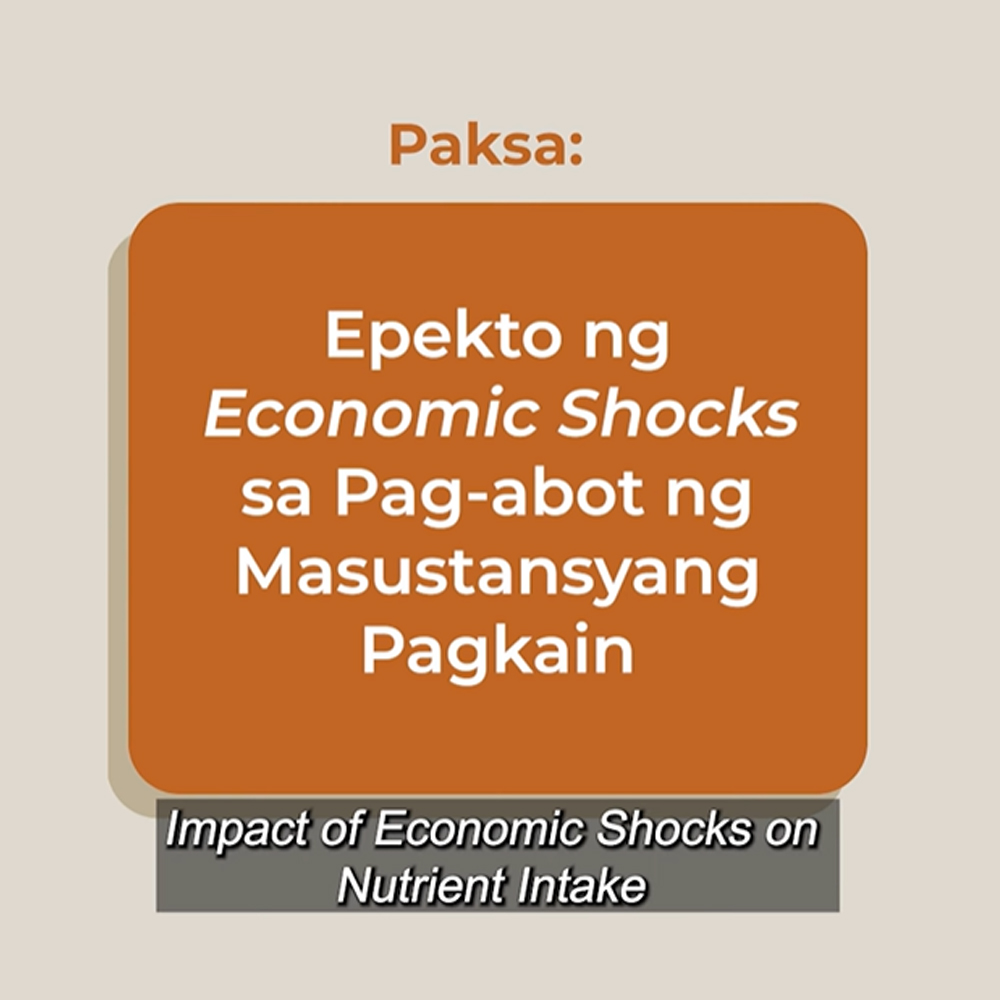RICE was very much at the center of the political debate in 2018, from its starring role in stoking inflation to the future of the National Food Authority as a provider of support prices to farmers and a supplier of subsidized grain to the poor. By the end of the year, a bill was on the President’s desk that threatened to sweep the old order away, removing the NFA’s admittedly corruption-riddled role in rice imports and leaving it to the private sector.
Agenda 2020 logo
But questions remain about how the tariffication bill will disrupt the rice market. First among these: How will more liberalized imports affect the uncompetitive rice industry? The government proposes to charge imports from the ASEAN region a tariff while using these collections to fund a rice industry competitiveness fund, to support mechanization and best practices. It is a measure of how little trust there is between the industry and government that farmers have expressed skepticism that they will see sufficient funding to upgrade their farming methods after the politicians get their hands on the money.
With inflation on the rise all year after the passage of a tax reform law, the House of Representatives passed House Bill 7735 or the Revised Agricultural Tariffication Act in August. It proposes to remove the quantitative restrictions on rice imports while setting a 40% Most Favored Nation bound tariff for imports within the minimum access volume (MAV) and a 180% tariff rate for imports outside the MAV, otherwise called out-quota importation.
For imports from within the Association of Southeast Asian Nations (ASEAN), tariffs will be set in accordance with the ASEAN Trade in Goods Agreement (ATIGA).
The bill was sponsored by Representatives Jose T. Panganiban, Jr, Gloria Macapagal-Arroyo, Arthur C. Yap, Sharon S. Garin, Dakila Carlo E. Cua, and Karlo Alexei B. Nograles.
The bill states that the current 805,000 tons MAV for rice will fall to 350,000 tons. The tariff, according to the bill, will be used to create the Rice Competitiveness Enhancement Fund (RCEF), to be released by the Department of Budget and Management (DBM) to the Department of Agriculture (DA).
Up to 20% of the tariffs will go to the rice endowment fund; up to 20% to a farm equipment and mechanization program; up to 20% to support crop finance; up to 20% for post-harvest, logistical projects and rice marketing; and up to 10% for education and training scholarships for rice farmers and their dependents; and up to 10% for research, development, and extension services for rice farmers.
HB 7735 also authorizes the NFA to establish the regulations for rice importation, as well as undertake some direct importation of rice to ensure food security and maintain sufficient stock.
It is precisely this role of the NFA that will abolished after the House Bill’s Senate counterpart largely prevailed in bicameral conference committee. The Senate bill removes the licensing power of the NFA for importers, and leaves it only with the role of procuring palay, or unmilled rice, from domestic farmers.
Senate Bill (SB) No. 1998 or an Act Replacing the Quantitative Import Restrictions on Rice with Tariffs, Lifting the Quantitative Export Restrictions, proposes to create a P10 billion RCEF to assist farmers. Some 50% of the fund will go to farm mechanization; 30% for development, propagation and promotion of inbred seed; 10% for credit at below-market interest for farmers, to be facilitated by Land Bank of the Philippines (LBP) and the Development Bank of the Philippines (DBP); and 10% for extension services to upgrade farmers’ capabilities.
The bill was sponsored by Senators Cynthia A. Villar, Sherwin T. Gatchalian, Ralph G. Recto, Leila M. De Lima, Risa N. Hontiveros-Baraquel, and Grace Poe-Llamanzares.
The Senate bill, which is a response to President Duterte’s call for unimpeded rice importation to ensure food security, was ratified in November.
In a statement, Agriculture Secretary Emmanuel F. Piñol said that his department, together with the NFA, welcomes the proposed changes as they promise to reduce corruption.
Through the years of its involvement in the rice importation program for buffer stocking, suspicions were rife that there were financial transactions involved where officials raked in money. The very tight importation requirements also led to corruption even in the awarding of import permits,” Mr. Piñol said.
On orders of President Duterte, the importation requirements were eased up allowing the private sector now to bring in rice with less hassle,” Mr. Piñol added.
Among those expressing skepticism that the privatization of rice imports will solve the problem were the Philippine Confederation of Grains Association (PCGA).
In an interview, Herculano C. Co, Jr, president of PCAG, said: “The solution there is that NFA should do the importation so that the price of rice stays low, but at a 25% tariff. NFA has nothing to lose there.
“What they did is to require the NFA to buy local palay (unmilled rice) at P20 per kilogram and then sell it at P27. That will definitely lead NFA to bankruptcy,” Mr. Co said.
Mr. Co proposes that the private sector buy palay at a P17 farmgate price, with the NFA stepping in only when the price of palay drops below that level.
“Let the private sector buy the palay… but if the price of palay drops below P17 or P18, NFA should come in and buy. However, if the price is above P17-P18, let the private sector buy,” Mr. Co said.
Currently, the NFA buys palay at P17 per kg, with an additional P3 incentive to induce farmers to sell to it.
Mr. Co also expressed skepticism about the RCEF, noting that there are no clear guidelines on the distribution of the funds in the bill passed. He fears the funds might be misused, as was a previous such fund, the Agricultural Competitiveness Enhancement Fund (ACEF).
Because of rice tariffication, Mr. Co said that the rice sector is now a sunset industry which will be gone in the next two years.
Think tank IBON Foundation said that the implementation of the rice tariffication bill will depress farm incomes.
IBON Foundation cited a study of the Philippine Institute for Development Studies (PIDS) which projects a 29% decline in farmer income. It assumes a P4 decline in palay prices when the bill takes effect.
IBON Foundation also cited the case of ACEF, under which P8.5 billion of the P13 billion fund was allegedly lent out on the basis of political patronage. The scheme was suspended in 2010 after the Commission on Audit (COA) ruled it to have been mismanaged.
IBON Foundation said that instead of implementing rice tariffication, the government should assist farmers by having an increased and direct budget support for land reform and irrigation. IBON Foundation said that the bill is not the solution for inflation, but the utilization of national funds to support price controls, the removal of consumption taxes, repealing the tax reform law and the prosecution of cartels.
Mr. Piñol said he is not worried rice will flood the market as importers know when to stop importing. Mr. Piñol said that no businessman in his right mind would order more when domestic supply is adequate.
Marites M. Tiongco, Dean of the De La Salle University (DLSU) School of Economics, who specializes in agricultural economics, said that the Philippine rice industry is not a sunset industry as long as rice is a staple food.
“It will never die as long as rice is our staple food, and (as long as) we are specializing in the production of rice. We are producing organic rice, and also heirloom rice that has a high demand in the export market,” Ms. Tiongco said.
Special rice, which includes organic and heirloom varieties, are not covered by the suggested retail price (SRP) scheme implemented by the Department of Trade and Industry (DTI), together with the DA and the NFA.
Ms. Tiongco also said that the country cannot achieve self-sufficiency in rice, and sees no harm in implementing the rice tariffication bill as tariffs will go towards supporting rice farmers in becoming more efficient.
“Domestic prices of rice are 80% higher than comparable rice from Vietnam and Thailand. Limiting entry of cheaper rice so as to protect domestic production increases the domestic price of rice and will hurt vulnerable poor households; so rice will not be affordable for poor households, and this contradicts NFA’s mission of making rice affordable for Filipinos,” Ms. Tiongco said.
“In fact, President Duterte has admitted that we can’t achieve rice self sufficiency. It is a critical necessity that a new rice policy be implemented to make the rice market equitable, because right now, the current rice policy, i.e., quantitative restrictions, increases the burden on poor households and generates perverse income redistribution from poor to rich.”
“Tariffication will increase the revenue of the government, and if this revenue is transferred to the targeted poor, there will be a productivity improvement, and it will generate favorable income distribution, thus reducing poverty,” according to Ms. Tiongco.
Rolando T. Dy, executive director of the University of Asia and the Pacific (UA&P) Center for Food and Agribusiness, said rice tariffication will benefit consumers, and sees nothing wrong with limiting the NFA’s role to procuring palay.
“It will likely benefit consumers as imports will help stabilize supply. Low-yield farmers face adjustments. High-cost farms, even if high yield, must mechanize,” Mr. Dy said.
Asked if he sees the sector disappearing, he said: “Some rice millers may (become) importers.”
“If NFA does its job well, it can mitigate adjustments,” Mr. Dy said.












